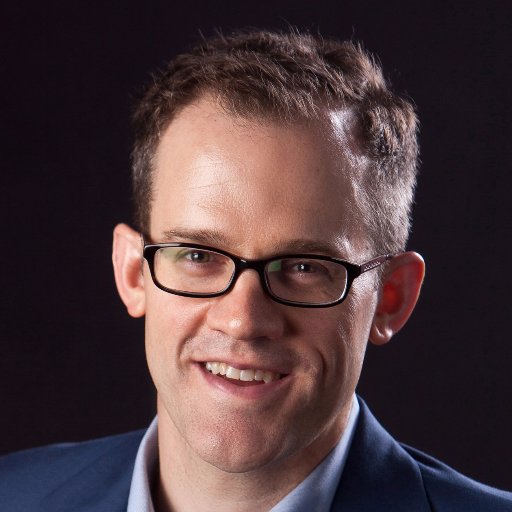
About the Author: Philip Nel is an American scholar of children’s literature and University Distinguished Professor of English at Kansas State University. He is best known for his work on Dr. Seuss and Harry Potter, which have led to his being a guest on such media programs as CBS Sunday Morning, NPR’s Morning Edition and Talk of the Nation.
Find Philip Nel on the following platforms:
Philip Nel: That’s a long story — longer than I can easily fit into an interview.
First, a quick answer to the “children’s literature” part. Though I did not realize it until after I got the Ph.D., children’s literature is the reason that I pursued the degree. Children’s books taught me how to read and why. In so doing, they created an English major who decided that he so enjoyed reading books and writing papers that he went to graduate school. You can find more fully developed versions of why I study children’s literature part in my Manifesto for Children’s Literature (2015) and in this blog post (2011).
Second, a brief answer to the “critical race theory” part. There’s a much longer personal answer that I have just (this month, actually) began to talk about publicly. But readers of Was the Cat in the Hat Black? and a recent Children’s Literature Association special issue (I edited) on “Migration, Refugees, and Diaspora in Children’s Literature” may have already gleaned that my interest in understanding and opposing racism derives from my family history. As I say in the introduction to that issue,
I am from a family of immigrants and am the descendant of refugees. The Nels were among those 2 million seventeenth-century French Protestants (Huguenots) whose flight from persecution introduced the word refugee into the English language. Today, my extended family (nuclear family plus cousins, uncles, and aunts) lives in five countries on four continents. We are a migratory group. In migrants, refugees, and the diasporic, I see my own family.
But I also see my family in the people who caused such displacement—from the active Islamophobe who supports a “Muslim ban” to the passive inheritors of White supremacy. I am aware that my being born in the US has everything to do with my parents being White South Africans and not Black South Africans. Their Whiteness granted them access not just to the education that made finding an American job possible, but also to the basic human rights that significantly increased the chances that they would survive and flourish. Indeed, my own flourishing is built upon a range of intersecting structures of oppression.
Seeing White supremacy’s legacy in my family — and myself — motivates my writing and research. In any case, all White people are beneficiaries of White supremacy, whether they want to be or not. And as beneficiaries of White supremacy, we have the strongest moral obligation to oppose it.
PN: I would say that these responses have deepened my understanding and affirmed my commitment to diverse books — and the fight against racism.
PN: BIPOC who do this work face far, far more roadblocks than I do. The armor of White, male, hetero, cisgendered privilege insulates me from most of it.
There’s a family estrangement, but that’s a long story — and a story for another day. Honestly, that person’s decision to cease talking to me has been an extraordinary gift. So, I experience it not as a roadblock but rather as generosity.
PN: I don’t agree with the terms of the question. A genre does not change by itself. Activists have forced the genre to change.
PN: Jessica Love’s Julián Is a Mermaid (picture book, 2018), Cherie Dimaline’s The Marrow Thieves (YA dystopia, 2017), Jacqueline Woodson and Rafael López’s The Day You Begin (picture book, 2018), Francesca Sanna’s The Journey (picture book, 2016), Rita Williams-Garcia’s One Crazy Summer (novel, 2010).
PN: Nostalgia. In particular, what Svetlana Boym calls “restorative nostalgia” — one that reveres “truth and tradition,” strives to reconstruct an uncomplicated past, longs for an “enchanted world with clear borders and values.” As one of America’s most popular authors-for-children, Seuss and his books can easily evoke this kind of nostalgic longing. As I say in the new Afterword,
First, children’s books are signposts not just to our childhoods but to the formation of our selves. Examining them closely can feel akin to a violation, because they reside deep at the core of the “me” that each of us have within us. Second, children’s books evoke what is both cherished and lost, a combination that … has the potential to be make us reactionary.
PN: Make some noise. Write about it on your blog and/or signal-boost the critics calling out these publishers. Contact the publishers directly. Work with organizations already doing this work — see answer to next question.
JB: Are there any pieces of advice you could give the next generation of writers and academics who wish to help further the cause of diversity in children’s and young adult literature?
PN: Follow Ebony Elizabeth Thomas (@EbonyTeach) on Twitter and read her The Dark Fantastic. Read and contribute to Research on Diversity In Youth Literature, an open-access journal edited (and co-founded) by Sarah Park Dahlen and Gabrielle Halko. Support We Need Diverse Books. Educate yourself via Lee & Low Books’ many diversity initiatives (the Diversity Baseline Survey for publishers, its Diversity Gap Studies, and many blog posts on diversity, race, and representation), Edi Campbell’s Diversity Resources, and other websites like Latinxs in Kid Lit, Teaching for Change, and Oyate’s Resources “that teach respect for Native peoples, and help parents and educators to provide their children with historically accurate, culturally appropriate information about Native peoples.”
Write diverse books, read diverse books, give diverse books, teach diverse books.
Support the Own Voices movement for diverse authors.
PN: You’re welcome.
Joe Buckler, Pine Reads Review Writer